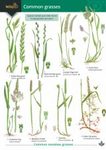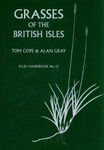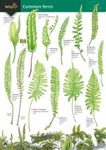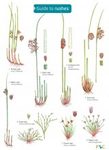![An Annotated Checklist of Indian Pteridophytes, Part 2: Woodsiaceae to Dryopteridaceae An Annotated Checklist of Indian Pteridophytes, Part 2: Woodsiaceae to Dryopteridaceae]()
Click to have a closer look
About this book
Customer reviews
Related titles
About this book
Language: English
Ferns and fern-allies are especially well represented in India and are conspicuous almost everywhere by their beautiful and intricately varied foliage. Yet this fascinating group of plants is often rather widely misunderstood due to their great complexity in the area and to a considerable degree of variation, with many erroneous accounts having been published on them in the past. In addition, the most recent published book covering the whole of India accurately was a Nineteenth Century work, and since then nearly all names of genera and even the majority of species have changed, while some more recent Census-lists have been beset by inaccuracies and errors to the point of being unreliable. Ongoing modern research both in India and abroad has revealed the existence of many more species than were known before, while a huge number of names in use in various works have proved to be synonyms, mere redescriptions of species already known.
The present work, published in three parts, has incorporated and evaluated modern research and has set out the whole spectrum of Indian ferns as known today, detailing their types, synonyms and carefully revised distribution as researched both in the field in and around the region, and in the world's herbaria, involving re-identification and verification of specimens over many decades of research by the specialist authors. Notes concerning misidentifications or taxonomic and nomenclatural problems are provided in situ under each species or genus.
Part 1 covers the families from Lycophytes through to Thelypteridaceae, in taxonomic order, and part 2 covers the large advanced and critical families from Woodsiaceae to the end of the Dryopteridaceae. Part 3 will cover the last families including Lomariopsidaceae, etc. Davalliaceae, the complex Polypods and Grammitids and Salviniaceae / Azollaceae, and is expected in early 2019.
It is planned subsequently to present a descriptive volume followed by a photographic volume to complete the set.
In addition to aiming to produce a detailed and comprehensively accurate account of these plants, many new revisions at species and some at generic level have also been made in the book itself, while setting out to maintain the important balance between molecular and morphological concepts of taxa.
It is hoped that stability of names and concepts along with indication of modern directions of research in various groups may result from the present work, which is intended to provide a comprehensive basis for present and future fern-study, cataloguing and identification relevant to the fern-flora of the whole of Asia.
Customer Reviews

























![Start to Identify Grasses [enlarged edition]](http://mediacdn.nhbs.com/jackets/jackets_resizer_medium/24/249274.jpg?height=150&width=112)











